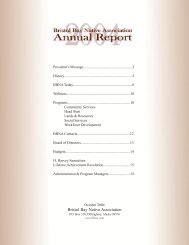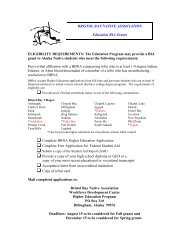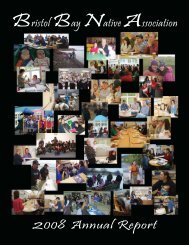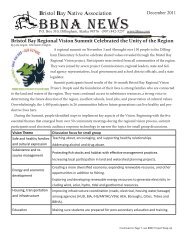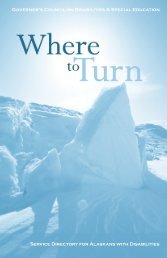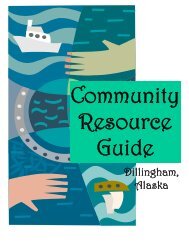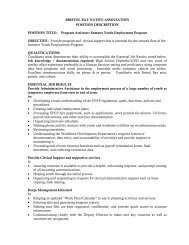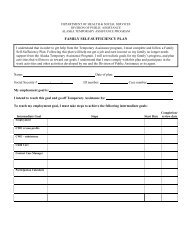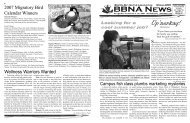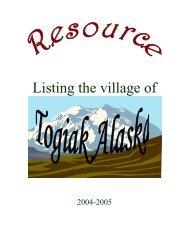2012 Annual Report - Bristol Bay Native Association
2012 Annual Report - Bristol Bay Native Association
2012 Annual Report - Bristol Bay Native Association
Create successful ePaper yourself
Turn your PDF publications into a flip-book with our unique Google optimized e-Paper software.
Marine Mammal Program<br />
The Marine Mammal Program promotes<br />
research for sustainable marine mammal populations<br />
and subsistence harvest activities while<br />
emphasizing local Tribal involvement at all<br />
stages of research, development, and implementation.<br />
Tribal participation includes marine<br />
mammal habitat population surveys, documentation<br />
of marine mammal habitat, utilizing GIS<br />
Mapping, providing local expertise to research<br />
teams in marine mammal research projects,<br />
conducting marine mammal harvest survey<br />
data, and ‘mentoring’ interns at Round Island<br />
to learn hands-on about walrus, Steller sea<br />
lion, and seabird productivity monitoring.<br />
The Imarpiim Ungungsiit Marine Conservation<br />
Collaborative Project is a 3-year project in which three communities<br />
are involved - Chignik Lagoon, Port Heiden, and<br />
Togiak resulting in the creation of a GIS database that documents<br />
traditional ecological knowledge and subsistence.<br />
The Freshwater Iliamna Harbor Seals Research Project<br />
includes the communities of Iliamna, Igiugig, Kokhanok,<br />
Levelock, and Newhalen. The community members document<br />
and observe the subsistence use of seals within Iliamna<br />
Lake. This project also helps to better characterize the seasonal<br />
patterns of seal behavior and provide valuable research<br />
information on this unique seal population inhabiting Iliamna<br />
Lake.<br />
The <strong>Bristol</strong> <strong>Bay</strong> Beluga Research Project is an ongoing<br />
project that started in 2002. Belugas are tagged to track<br />
Petricia Chunak, intern from New Stuyahok observing walrus<br />
on Round Island.<br />
Map of recent beluga locations in <strong>Bristol</strong> <strong>Bay</strong>.<br />
From the ADF&G Website.<br />
their year-round movements and skin biopsies are collected for analysis. The project goal is to install<br />
up to ten satellite tags on the belugas of Nushagak <strong>Bay</strong>. The tracking data can be accessed on the<br />
Alaska Department of Fish and Game website. Besides satellite tagging, beluga skin biopsies have<br />
been collected from skin to identify individual belugas which helps estimate how many belugas are in<br />
the population. Information from these samples may<br />
be used to compare with Cook Inlet belugas. These<br />
studies are approved by and done in cooperation with<br />
the <strong>Bristol</strong> <strong>Bay</strong> <strong>Native</strong> <strong>Association</strong> and the <strong>Bristol</strong> <strong>Bay</strong><br />
Marine Mammal Council. Other cooperators include<br />
the Alaska Beluga Whale Committee, National Marine<br />
Fisheries Service, National Marine Mammal Laboratory,<br />
U.S. Fish and Wildlife Service (Togiak Refuge), and the<br />
Alaska Department of Fish and Game. This project<br />
was funded by the National Marine Fisheries Service.<br />
Helen Aderman is the Marine Mammal Coordinator<br />
at BBNA; she can be reached at (907) 842-6240 or<br />
haderman@bbna.com.<br />
Malcolm Upton, intern from Togiak taking water<br />
quality samples in the field.<br />
17




